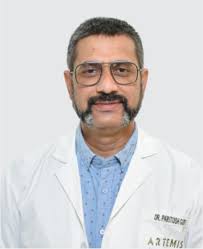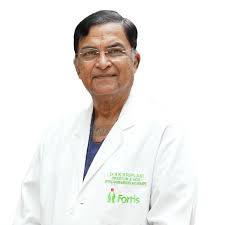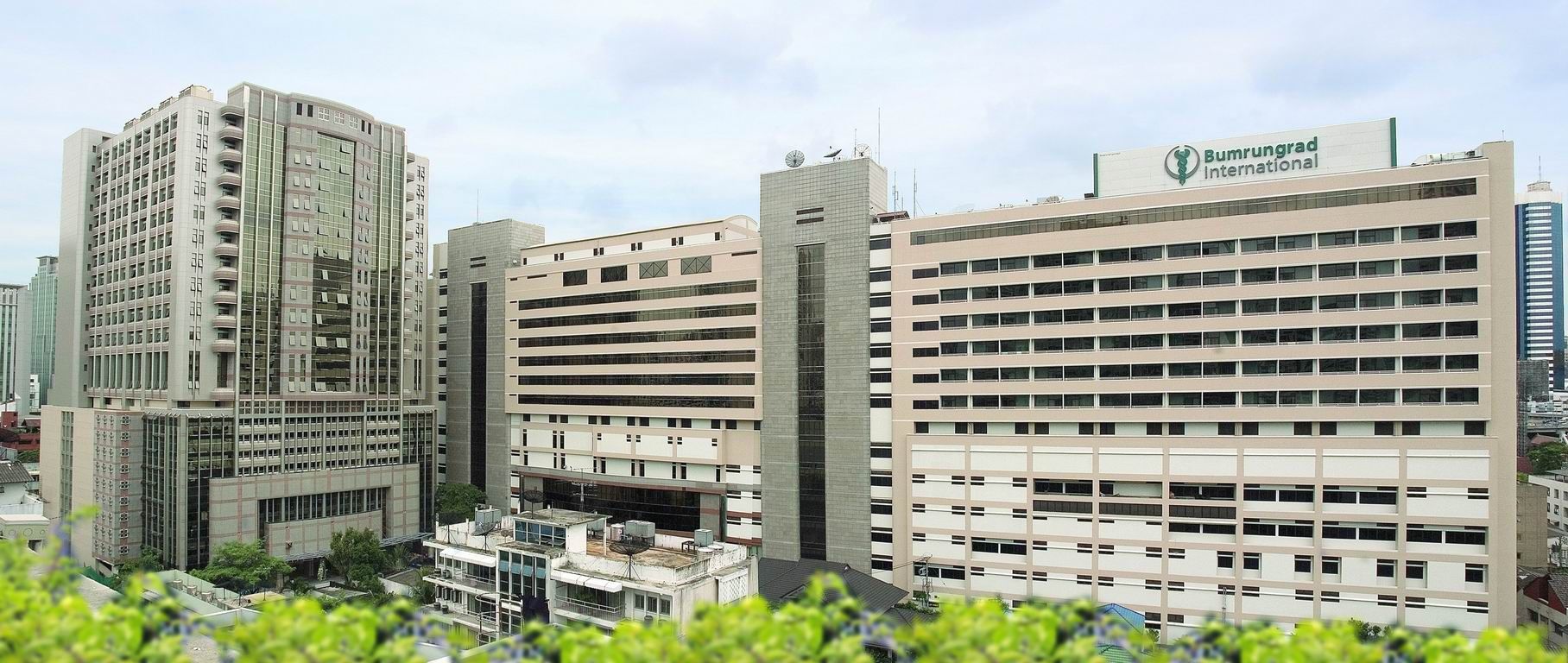General Surgery
Parathyroidectomy Treatment
Parathyroidectomy
Parathyroidectomy is the surgical procedure for removing one or more parathyroid glands. This procedure is used for removing primary tumors or hyperplasia of the glands, particularly when they produce excessive parathyroid hormone (hyperparathyroidism).
What is Parathyroidectomy?
Parathyroidectomy is the surgical procedure for removing one or more parathyroid glands. This procedure is used for removing primary tumors or hyperplasia of the glands, particularly when they produce excessive parathyroid hormone (hyperparathyroidism). The location of the glands is generally behind the thyroid, but there can be a lot of variation. Generally, the location of an enlarged gland has been confirmed by an ultrasound or a sestamibi scan.
Left Parathyroidectomy Treatment
Left parathyroidectomy treatment is a surgical procedure to remove the left parathyroid gland which is overactive or abnormal. This is an urgent procedure for left sided primary hyperparathyroidism from an adenoma (benign tumor), or hyperplasia and is also known as parathyroid adenoma removal surgery
Need for Parathyroid Removal Surgery
For some conditions where calcium regulation is lost or complicated, this is generally used as treatment.
Below are the common reasons for a parathyroidectomy:
- Primary Hyperparathyroidism
- Secondary Hyperparathyroidism
- Tertiary Hyperparathyroidism
- Parathyroid Cancer
- Severe Complications or Symptoms
Symptoms leading to Parathyroid Removal Surgery
Most often parathyroidectomy is recommended when certain symptoms or conditions exist which tend to be due to abnormal parathyroid hormone (PTH) levels.
Here are the key symptoms and signs that may indicate the need for parathyroidectomy:
- Elevated Blood Calcium
- Bone Problems
- Kidney Stones
- Fatigue or Weakness
- Mental Health Issues
- Nausea or Vomiting
- Abdominal Pain
- Constipation
- Loss of Appetite
- High Blood Pressure
- Bone Deformities
What are the risks involved?
Hoarseness (i.e. recurrent laryngeal nerve injury): The recurrent laryngeal nerves lie on either side of the trachea (windpipe) right in the site where the parathyroid glands are found. These recurrent laryngeal nerves control the vocal cords of an individual. Injury to one of the nerves may lead to hoarseness or a whispering quality to the voice of the patients. Sometimes, the nerve becomes irritated while removing the parathyroid gland and ultimately leads to temporary hoarseness.
Low calcium levels in the blood (i.e. hypocalcemia or hypoparathyroidism): Low calcium levels in the blood can result after the parathyroidectomy because either the remaining parathyroid glands are stunned after the surgery or too much parathyroid tissue was being removed.
Wound infection: Infections in the neck after the operation are very rare and may only occur once in every 1,000 patients. For this reason, antibiotics are usually not needed before or after the operation. If a redness, fever, or swelling of the wound develops, the patient should be visited by the surgical team for further evaluation.
Pre-Treatment Process of Minimally Invasive Parathyroid Surgery
Parathyroidectomy surgery is an important procedure and the amount of work that has to be done prior to the treatment process is very important to have a safe, efficient and prepared surgery. The objective is to accurately diagnose a condition, to assess overall health of the patient and determine the most appropriate surgical approach.
Below is an outline of the typical steps involved before parathyroidectomy:
- Medical Evaluation and History
- Laboratory Tests
- Imaging Studies
- Preoperative Counselling
- Evaluating Bone Health
- Evaluating Kidney Function
- Pre-Surgery Instructions
- Postoperative Planning
Diagnostic Tests for Minimally Invasive Parathyroid Surgery
Accurate diagnosis in parathyroid dysfunction and surgical approach is essentially dependent on the diagnostic tests for parathyroidectomy. These tests are used to identify the exact cause of abnormal results of parathyroid hormone (PTH) blood tests, locate where in your body one or more of the affected parathyroid glands are, and help assess how well your overall health is.
Below are the primary diagnostic tests used before parathyroidectomy:
- Blood Tests: Serum Calcium Levels, Parathyroid Hormone Levels, Vitamin D Levels, Phosphate levels, Kidney Function Test, Alkaline Phosphatase
- Imaging Studies: Neck Ultrasound, Sestamibi Scan, CT Scan or MRI, 4D CT Scan
- Bone Density Test
- Urine Tests
Parathyroid Tumor Surgery
- The patients will receive general anaesthesia for this surgery.
- Generally, the parathyroid glands are being removed by the use of a two to four inch surgical cut on the neck.
During Parathyroid Tumor surgery:
- The incision is generally made in the center of the neck, just under the patient’s Adam's apple.
- The surgeon will look for the four parathyroid glands and will remove any of the glands that are being diseased.
- The patients may require a special blood test during surgery to tell if all the diseased glands were removed or not.
- In very rare cases, when all four glands are required to be removed, part of one is being transplanted into the forearm. Or, it is being transplanted into a muscle in the front of the neck just next to the thyroid gland. This helps ensure the patient’s body's calcium level stays at a healthy level.
The specific type of surgery required by the patients depends on where the diseased parathyroid glands are present.
Types of surgery include the following:
- Minimally invasive parathyroidectomy: The patients may receive a shot of a very small amount of radioactive tracer before they have undergone this surgery. This is useful in highlighting the diseased glands. If the patients have this shot, the surgeon will use a special probe, like a Geiger counter, for locating the parathyroid gland. The surgeon will make a small incision on one side of the patient’s neck, and then the diseased gland is being removed through it. This surgical procedure usually takes about 1 hour.
- Video-assisted parathyroidectomy: The surgeon will make two small incisions in their neck. One incision is for instruments, and the other is for a camera. The surgeon will use the camera to see the site and the diseased glands will be removed with the help of these instruments.
- Endoscopic parathyroidectomy: The surgeon will make two or three small incisions in the front of the patient’s neck and one cut above the top of the collarbone. This reduces visible scarring, recovery time and pain. This incision is less than 2 inches long. The procedure for removing any diseased parathyroid glands is quite similar to that of video-assisted parathyroidectomy.
After the Surgery:
- Usually, people can go home the same day as they have surgery.
- The patients can start their day to day activities in a few days.
- It usually takes about 3 weeks for them to fully heal.
- The surgical site must be kept clean and dry.
- The patients may be required to drink liquids and eat soft foods for a day or so.
- The patients must call their surgeon if they have any tingling or numbness around their mouth in the first 24 to 48 hours after the surgery.
- This can result as a result of low calcium.
- After this surgical procedure, the patients should have routine blood tests for checking their calcium level.
- People generally recover soon after this operation.
- Parathyroid glands are very small; the patients may be required to have tests that show exactly where the glands are.
- This will help the surgeon find the patient’s parathyroid glands during surgery.
- Two of the tests the patients may have are an ultrasound and a CT scan.
- Before surgery, an anaesthesiologist (is a doctor who will give the patients medicine that allows them to sleep and be pain-free during surgery and monitors the patients during surgery) will review the patient’s medical history and decide what type of anaesthesia is preferable to them.
The patients must tell their surgeon:
- If the patients are or might be pregnant
- What vitamins, herbs, medicines, and other supplements the patients are taking, even ones the patients brought with them without a prescription
During the week before your surgery:
- The patients must fill any prescriptions for pain medicine and calcium that they will require after the surgery.
- The patients may be asked to stop taking blood thinners. These include vitamin E, warfarin (Coumadin), dabigatran (Pradaxa), rivaroxaban (Xarelto), apixaban (Eliquis), clopidegrel (Plavix), and NSAIDs (aspirin, ibuprofen),
- The patients must ask their surgeon, which drugs they should still take on the day of their surgery.
On the day of the surgery:
- The patients must follow instructions about what to eat and drink.
- The patients must take the medicines the surgeon asked them to take with a small sip of water.
- The patients must arrive at the hospital at the time.
- Hniques are used.
- Sometimes, another surgery may be required for removing more of the parathyroid glands.
Success Rate of Surgery for Parathyroid
For primary hyperparathyroidism, parathyroidectomy is highly successful: >90%-95%, respectively for primary and secondary/tertiary hyperparathyroidism. Concrete success depends on accurate diagnosis, surgical technique and the disorder type as well as postoperative monitoring.
Best Hospitals for Parathyroidectomy
- Artemis Hospital, Gurgaon
- Medanta The Medicity, Gurgaon
- Fortis Memorial Research Institute, Gurgaon
- Max Hospital, Delhi
- BLK-Max Super Speciality Hospital, Delhi
Best Doctors for Parathyroidectomy
- Dr. T. Krishan Thusoo
- Dr. Dheeraj Kapoor
- Dr. Rajesh Rajput
- Dr. Sujit Bhattacharya
- Dr. Ambrish Mithal
- Dr. Ashok Kumar Jhingan
Why Choose GetWellGo for Surgery for Parathyroid?
If you are thinking about going to GetWellGo for your parathyroidectomy, it’s important to know what those unique things are. Below are general reasons why a reputed facility like GetWellGo could be a preferred choice for parathyroidectomy:
- Expert Surgical Team
- Comprehensive Diagnostic Capabilities
- Personalized Patient care
- Post-Surgical Care and Monitoring
- Medical Visa Assistance
- Travel and accommodation Services
- Multilingual Support
Conclusion
The surgical procedure parathyroidectomy is carried out to cure conditions such as primary hyperparathyroidism, secondary hyperparathyroidism, tertiary hyperparathyroidism or parathyroid cancer. It relieves symptoms caused by excessive parathyroid hormone and prevents hypercalcemia, osteoporosis, kidney stones and neuromuscular problems. In primary hyperparathyroidism, the success rate of parathyroidectomy is greater than 90-95% and patients usually have dramatic symptom improvement after surgery. Additionally, personal care, minimally invasive options and postoperative monitoring are also provided by it. Patients should get implants and a good surgical team they can trust, follow certain pre and post-surgical guidelines and commit themselves to long term monitoring.
FAQ
1. Why should parathyroidectomy be performed?
- Normalization of Calcium Levels: Resolves hypercalcemia, and related problems.
- Symptom Relief: Treats symptoms such as fatigue, muscle weakness, bone pain and kidney problems.
- Improved Bone and Kidney Health: Reduces the risk of osteoporosis, fractures, kidney stones.
- Better Quality of Life: Also, many patients get improvements in mood, cognition, and energy level after surgery.
- Prevention of Long-Term Complications: It prevents chronic kidney disease, cardiovascular diseases and severe bone disorders.
2. How successful is parathyroidectomy?
- Primary Hyperparathyroidism: Success rates are about 90–98% in cases due to a single adenoma.
- Secondary/Tertiary Hyperparathyroidism: Due to involvement of multiple glands and concurrent kidney disease, success rates are 1-2 points lower than thyroid (70–90%).
- Parathyroid Cancer: Cure rates vary according to the stage; cure rates around 60–70 % are achieved for localized disease.
3. What is the parathyroidectomy recovery time?
- Minimally Invasive Surgery: For most patients, recovery occurs in 1-2 weeks, but some are able to return to light activity days after.
- Traditional Surgery: Recovery can take up to 2-4 weeks and time will depend on the surgical complexity and particular factors of the individual’s health.
- Temporary symptoms like neck soreness or mild hypocalcemia all the way to full recovery will require managing.
TREATMENT-RELATED QUESTIONS
GetWellGo will provide you end-to-end guidance and assistance and that will include finding relevant and the best doctors for you in India.
A relationship manager from GetWellGo will be assigned to you who will prepare your case, share with multiple doctors and hospitals and get back to you with a treatment plan, cost of treatment and other useful information. The relationship manager will take care of all details related to your visit and successful return & recovery.
Yes, if you wish GetWellGo can assist you in getting your appointments fixed with multiple doctors and hospitals, which will assist you in getting the second opinion and will help you in cost comparison as well.
Yes, our professional medical team will help you in getting the estimated cost for the treatment. The cost as you may be aware depends on the medical condition, the choice of treatment, the type of room opted for etc. All your medical history and essential treatment details would be analyzed by the team of experts in the hospitals. They will also provide you with the various types of rooms/accommodation packages available and you have to make the selection. Charges are likely to vary by the type of room you take.
You have to check with your health insurance provider for the details.
The price that you get from GetWellGo is directly from the hospital, it is also discounted and lowest possible in most cases. We help you in getting the best price possible.
No, we don't charge patients for any service or convenience fee. All healthcare services GetWellGo provide are free of cost.
Top Doctors for General Surgery
Top Hospitals for General Surgery
Contact Us Now!
Fill the form below to get in touch with our experts.







